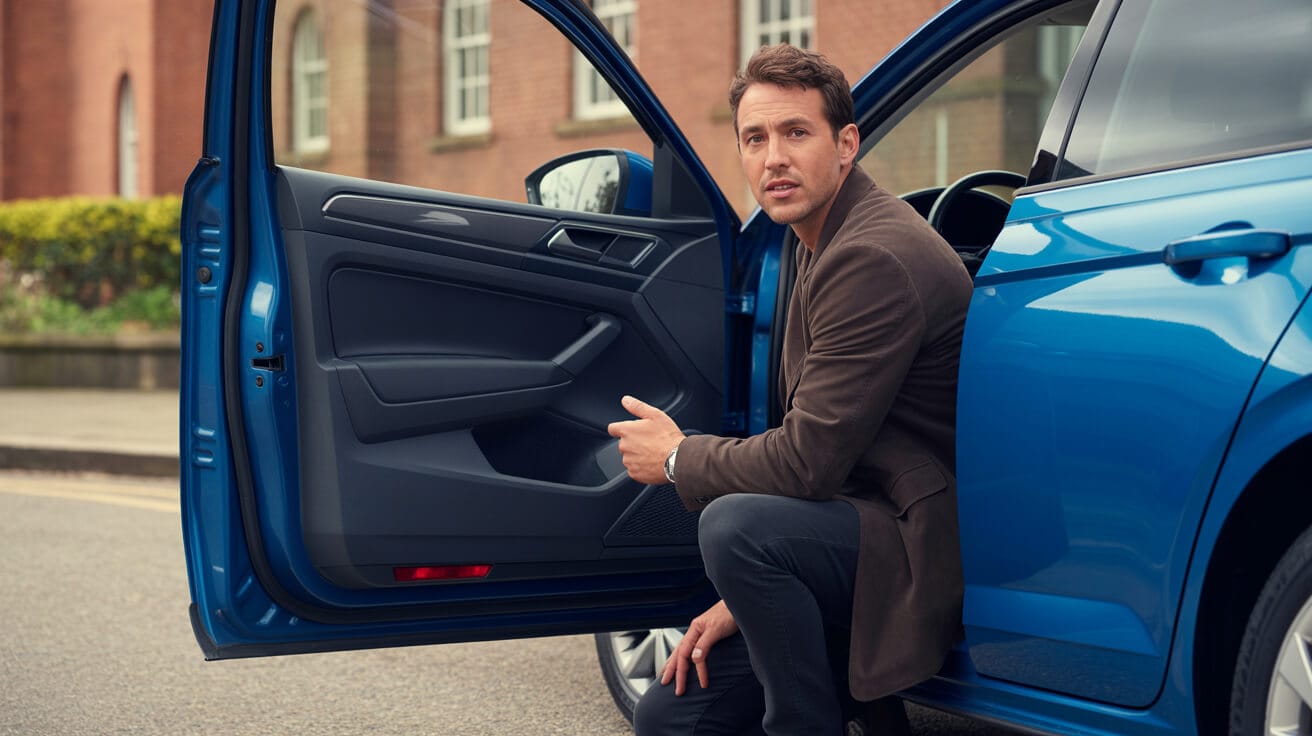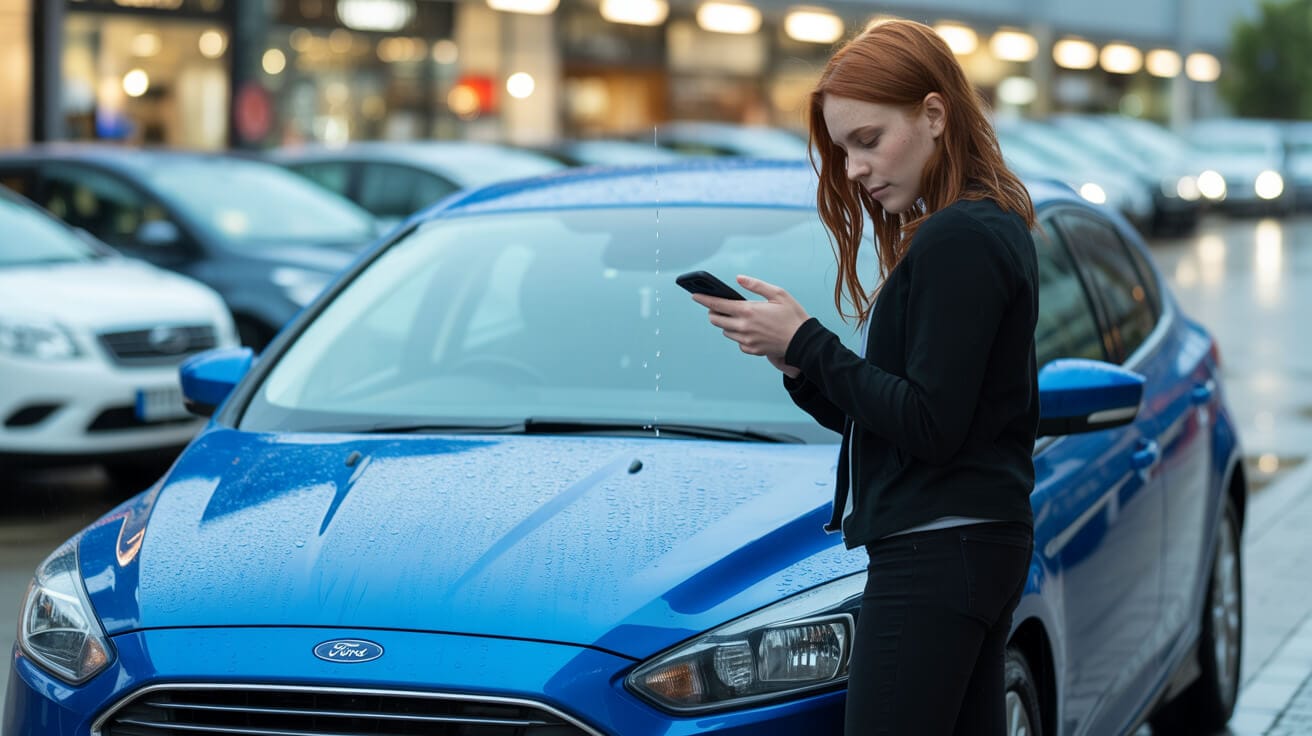Why Are Modern Boot Lockouts So Common—And What Should You Watch Out For?
If you’ve ever closed your car boot and felt that jolt of panic—the keys, or worse, your smartphone-as-key, are locked inside—you’re not alone. Today’s vehicles are built with multi-layered boot locking systems. Physical keys are just one brick in the wall; digital credentials, Passive Keyless Entry (PKE) fobs, smartphone access, and Ultra Wideband (UWB) modules make it easy to misstep. Everything from a silent app trigger to a mistaken boot-close button press can snare your credentials in seconds.
Older models offered visible cues, like a stuck key or jammed lock. Newer cars often respond with a subtle beep or “key not detected” alert, sometimes missed amid distraction. These systems, designed to outsmart thieves, routinely deadlock all entry points once any breach attempt or digital anomaly is detected—turning a forgotten key into a security event logged in your car’s computer.
| Factor | Older Cars (Pre-2012) | Modern Cars (2012+) |
|---|---|---|
| Boot Lock | Physical key | Remote fob, PKE, app, ECU rules |
| Early Warning | Key stuck | Beeps, “key not detected,” or silence |
| DIY Entry | Sometimes possible | Rare, high risk of escalation |
| Warranty Risk | Typically low | High—events logged, warranty at risk |
For modern drivers, routine has changed. Protect yourself by pausing to check your keys—especially with selective boot modes, new backup devices, or unfamiliar app functions. Wait for visual or audible confirmations, and always keep your backup key separate. Today’s keys can be digital, virtual, or pocket-bound, but the risk of costly inconvenience remains real.
Can DIY Boot Entry Actually Save the Day—or Make It Worse?

When you’re locked out, it’s tempting to try everything you’ve read on forums—a coat hanger, a tennis ball, jiggling the latch with whatever’s on hand. The reality is, modern vehicles aren’t built for improvisation. Their security stacks—sealed locking modules, protected wiring, and sensor-laced boots—turn old tricks into liability hazards. Most “creative” attempts damage seals, break wiring, or set off alarms (recorded in your vehicle’s event logs).
Statistically, more than 40% of DIY rescue efforts result in lasting harm: scratched paint, bent actuators, broken sensor wires, and tripwires in your vehicle’s diagnostic history. Even a single misstep can impact warranty claims or insurance payouts for years to come. With airbag modules and networked electronics woven through the boot, an errant tool or forced contact risks additional repair costs and safety compromises.
| Approach | Damage Risk | Warranty Impact |
|---|---|---|
| Improvised DIY | High | Likely void |
| Audit-trained Locksmith | Minimal | Protected |
What DIY Hazards Are Most Common?
- Scratching bodywork or trims around the boot
- Misaligning boot latches and making future closures trouble-prone
- Breaking actuator wiring—compromising not just locks but boot sensors
- Triggering event logs—so any future diagnostics or claims raise red flags
Look past the urge for a quick fix. Every manufacturer, insurer, and leasing company tracks unauthorised entry, and today’s systems are designed to penalise non-compliant attempts to gain access. Audit-trained locksmiths know your vehicle’s architecture, match tools and methods to the system, and stand behind their work with reality-tested, manufacturer-sanctioned procedures. The right team brings skill, not luck.
Before you reach for that questionable “hack,” ask yourself whether it’s worth risking your car’s value, warranty, or control of your insurance future. Professional help delivers more than entry—it preserves your peace of mind.
Why Do Secure Boot Entries Always Start With ID Checks and a Digital Trail?

Every legitimate boot entry—especially for modern vehicles—begins with an owner verification protocol. No professional will touch your car without verifying identity, collecting your V5C registration, and gaining your digital consent. These are not arbitrary hurdles. Instead, they provide you and your vehicle with legal protection, digital accountability, and clear chains of custody.
What does an “audit trail” really mean in practice? Each step—from technician background, through tool usage, to finished job data—is captured in a tethered flow to ensure no red flags, no unauthorised access or process shortcuts.
Here’s What Your Audit Trail Captures
- Engineer identity: Only certified engineers, traceable through credentials and background checks, have access.
- Tool tracking: Programming tools, inspection scopes, and cutting machines are logged to your specific job for compliance and quality.
- Photo documentation: Each intervention point is photographed and appended to your record for transparency and dispute avoidance.
- Timestamp and sign-off: Digital and physical logs of who did each step, when, with your explicit sign-off upon completion.
This isn’t about surveillance; it’s your insurance policy against future disputes, erroneous claims, or denied warranty. Data is managed to GDPR standards—your authorisation, minimum information, and strict retention.
Real-World Example: The Power of a Digital Record
Consider a scenario: months after service, a fault triggers and the dealer questions prior access. With a complete audit trail, you instantly prove that every entry was both authorised and manufacturer-compliant, diffusing warranty battles or claims friction.
Transparency and accountability can’t be retrofitted after the fact. Demand the audit, not just access, for every boot recovery.
What Non-Destructive Methods Do Audit-Trained Locksmiths Use to Retrieve Locked Keys?

Professional vehicle entry today is a discipline—a carefully engineered process designed to unlock your boot without damage or loss of warranty. Audit-trained locksmiths operate with a non-destructive-first philosophy, adjusting every step to suit your make, model, and security stack. Each method ensures your car leaves the encounter with its value intact and its compliance profile clean.
The 7-Step Non-Destructive Entry Checklist
- Establish authorisation: Confirm your ownership using V5C and photo ID, record digital consent.
- Perform site safety check: Evaluate surroundings for environmental and personal safety risks before work begins.
- Prepare for entry: Apply paint- and trim-protection mats, sleeves, and support tools to all access points.
- Gain access: Use only manufacturer-approved air wedges, probes, or borescopes, controlled for your exact lock configuration.
- Initiate diagnostics: Connect accredited diagnostic tools to scan your vehicle’s lock state, network activity, and event history to avoid escalation.
- Function check: Demonstrate to you, in person, that all locking, alarm, and start functions remain as designed—no job marks as complete until validated together.
- Digital handover: Photographic and digital audit logs are handed off to you, complete with warranty support and aftercare guidance.
These protocols solve nearly all boot lockouts—rare exceptions are handled via digital resets or coordination with dealer databases, always with your consent. You’re in the loop at every critical step, from diagnostic pauses to aftercare delivery.
When there’s a choice between urgent access and best practice, best practice always wins. It’s how you protect your time, wallet, and vehicle value.
How Do Data Compliance and Secure Job Records Protect Your Interests?

You trust professionals to keep your car secure; you should also expect them to protect your personal data. Every step of a modern boot unlock now produces a privacy-protected digital record—minimising risk while maximising your control over information. Audit-trained locksmiths work to strict standards compliant with GDPR and ISO/SAE 21434, limiting data collection to what is legally required and deleting it when your needs are met.
What Should You Expect in Your Secure Record?
- Comprehensive logs: Every tool and technician, each access event, stored only as needed for claims, warranty, or fleet evidence.
- Encryption and access control: Your data is locked at rest, and moved securely in transmission—anywhere, anytime.
- Minimal retention: Only what is required is kept, and only as long as is strictly necessary.
- Disclosure on your terms: Data is never shared unless you give explicit consent.
- Clear deletion policies: Validators ensure that expired or unnecessary records are removed without exception.
Imagine selling your car, handling a claim, or resolving a fleet disagreement—the right digital evidence saves hours and provides legal assurance. The system is built to serve you, not surveil you.
Privacy isn’t a bonus feature; it’s an integral service value. Pick a team that treats your data with the care it brings to protecting your car.
What’s Changing in Boot Lockouts With Smart Systems, Digital Credentials, and Secure Apps?

The world of “lost key in the boot” has been upended. Today, your access credential is just as likely to be a phone, a smart card, or a cloud-mediated digital token as a chunk of metal. With this convenience comes new risks—phone battery dies, the app glitches, server downtime strikes, or credential sync fails after a manufacturer update.
A modern boot retrieval is now an exercise in technician skill and digital troubleshooting, not just mechanical dexterity. The job often pivots from physical access to encrypted diagnostics, database resets, and re-credentialing workflows—all performed to protect you and your car’s ongoing relationship with the manufacturer.
The Playbook for Secure Digital Entry
- Clarity in diagnosis: First, establish whether it’s a physical, digital, or mixed access problem—phone drained, app bugged, or a security sync issue.
- Transparent consent: You’re kept in control with each step authorised via secure tools.
- Fully audited connection: Programming and diagnostic sessions are logged with time, tool ID, technician ID, and event flow—so every byte is accounted for.
- Credential management: Any digital reset or update comes with explicit, itemised logging and a walkthrough for your future reference.
Step-List: Secure Digital Entry at a Glance
- Identify nature of credential failure.
- Reinforce digital consent and ownership.
- Use encrypted, compliant tools for entry and/or credential reset.
- Walk you through each change and hand over a digital support summary.
The shift from mechanical to digital has made security more personal—your device, your authorisation, your audit record. That’s what ensures trust in an age of “smart” vehicles.
What Should You Expect—and Pay—When Booking an Audit-Logged Boot Unlock?

Transparent pricing has become the standard for audit-first boot unlocks in the UK. Services are menu-priced so you know exactly what you’re getting, how it’s documented, and where your records end up. Whether you need standard, emergency, or fleet-level support, the price quoted in advance includes every procedure, tool use, and aftercare touchpoint—no surprises, no late-stage add-ons.
| Service Level | Features Included | Price Range |
|---|---|---|
| Standard | Itemised quote, digital job record, aftercare | £90–£140 |
| Emergency (1 hour) | Priority dispatch, audit log, priority tools | £120–£180 |
| Fleet/Contract | All records digital, SLA per contract | By contract |
- Start with secure ID and V5C submission: You provide ownership details before any action begins.
- Pick your response tier: Choose standard, rapid emergency, or fleet contract tier as you need.
- Approve by digital consent: Sign off on work, costs, and aftercare in plain-English, online or on the spot.
- Track progress live: Get SMS or call updates through dispatch, arrival, completion, and record transfer.
- Complete with satisfaction review: Payment is never requested until entry, validation, and feedback are finished.
Clarity isn’t an option—it’s the backbone of your relationship with a trusted locksmith. Your audit-first booking means you’re never left guessing, and never at the mercy of tricky terms or post-hoc fees.
Aftercare: What Happens Once Your Boot Is Opened—And How Autolocks Ltd Puts You Back in Control

A professional’s job doesn’t end when your keys are back in hand. With every audit-trained entry, aftercare is as disciplined as the unlock itself. The engineer demonstrates every major vehicle function with you—lock, unlock, alarm, engine start—before signing off digitally and physically. You’re walked through the job record, warranty coverage, and future support options so there’s no ambiguity or risk left behind.
Autolocks Ltd’s Four-Step Handover Protocol
- Live function demonstration: Together, verify all lock, alarm, and start actions on your car.
- Full audit report and itemised summary: Both digital and hard copy, matched to your vehicle and event, are given to you on site.
- Warranty and aftercare explained: You’re coached on coverage period, exclusions, battery care, and season-specific best practices.
- Support locked in: Direct contact details and support lines are handed over in multiple formats for immediate or future needs.
This culminates in a sealed record—timestamped, warranty-affirmed, and ready for your records, resale, or claims. It’s that last mile—the final handover and the clarity it brings—that separates a lasting solution from a fleeting fix.
Control isn’t given, it’s earned. Aftercare means you own every part of your vehicle’s history after a lockout, not just the momentary rescue.
Why Trust Autolocks Ltd for Your Boot Unlock—What Sets an Audit-Logged Service Apart?
Autolocks Ltd is more than a locksmith—it’s a compliance-anchored partner for vehicle access. Every engineer is background-checked, certified, and trained to UK and ISO standards. Each action is tracked through a digital audit: from initial ID check and consent through protected, non-destructive entry, to warranty-augmented aftercare and digital record delivery.
You see the itemised price up front—no guesswork, no extras tacked on. All records are encrypted and accessible for you, ensuring that your car’s compliance profile, warranty, and resale value are secure now and in the future.
- Transparent, itemised menu pricing: at every stage
- Vetted and insured professionals: trained beyond minimum compliance
- Digital and paper records: signed on-the-spot, encrypted for future proof
- Live national support: —engineers cover every UK zone, never leaving you in the dark
- Highest first-time fix rates: —meaning more confidence, less risk
Whether you’re managing a fleet, protecting a new vehicle’s warranty, or coping with the frustration of a routine lockout, Autolocks Ltd’s combination of technical rigour, digital transparency, and full-spectrum aftercare sets a new standard for owner confidence.
Choose Autolocks Ltd when a simple lockout could jeopardise your day, your warranty, or your car’s value. If you value compliance, record-controlled service, and true peace of mind, we’re your on-demand partner.
Frequently Asked Questions
Why are UK drivers more at risk of boot lockouts than ever before—and what’s actually behind this new trend?
Locked keys in the boot are no longer just about carelessness; they’re baked into the way today’s cars and drivers interact. Manufacturers have separated boot and cabin entry for theft prevention, but didn’t account for real habits. Most remotes allow boot-only access without unlocking the doors—a small convenience that invites massive headaches. Add auto-relocks and delayed relock timers (where doors self-lock after a brief period), and your keys or digital fob get trapped behind reinforced steel in seconds, often without warning.
A split-second routine can outsmart years of experience—because convenience rewrites risk faster than habits adapt.
Urban lockouts spike during evening/weekend errands, while rural drivers face longer wait times and higher escalation risk. The most common culprits aren’t “dumb mistakes,” but trusting a system’s logic—clipping keys to shopping, relying on digital fobs, assuming a valet or ‘boot pop’ overrides lock states. Many manufacturers now default to tighter boot security for insurance reasons—and their settings change quietly with model year or app update. This is no longer a problem solved by being careful: the only way to stay ahead is to know exactly how your car and key interact, test what happens when you shut the boot, and plan a routine escape route that works every time. With feature-packed cars, the hidden challenge isn’t the key—it’s friction between technology, behaviour, and the service network that rescues you when logic breaks down.
2024’s top sources of boot lockouts
- Boot-only remote cycles that don’t release door locks (high frequency in VAG, Ford, PSA groups)
- Digital keys/app locks—phone battery dead, app out of sync, or lost main key
- Automatic relocking after remote boot open, especially on newer BMW, Toyota, Nissan, and Hyundai/Kia models
- Routine errors—keys left in boot with bags (often after groceries), relying on spare hidden in vehicle, or misreading “door locked” beeps/lights
- Failure to test new or rental car’s lock logic before first heavy use
When does a simple boot lockout turn into an emergency—and how should you respond to avoid bigger losses?
A minor lockout becomes an emergency the moment someone—or something valuable—is left inside. Every major police force in the UK is clear: any situation where a child or pet is trapped in a closed vehicle qualifies as an urgent risk, even on mild days. Heat climbs rapidly, but so does security exposure; thieves target boot-visible bags or electronics, and unrushed DIY fixes double both your insurance risk and repair bills. Every minute you delay, frustration—and sometimes danger—compound.
Urgency isn’t just about safety—it’s about cutting loss before damage, delay, or denial compound your trouble.
The playbook: If a person or pet is inside, call emergency services and document everything (including times and photos). If you’re safe but stuck, move valuables to view and get help from an authorised auto locksmith—never force or improvise. Documentation (calls, photos, logs) instantly elevates your claim status and shields against denied coverage. The fastest rescues happen not by luck or guesswork, but by sequencing decisions: log what triggered the lockout, state your case clearly (to insurer or police), and demand full audit trail proof from any provider. Insurance adjusters love two things—timely calls and clean evidence—while punishing every shortcut.
Priority action map for lockout escalation
- Life/animal hazard: Dial 999, document, and never attempt entry
- Valuables in sight in urban area: Secure scene, call compliant locksmith, photograph status
- Adverse weather or isolated location: Flag to operator for fast route/SLA; record all communications
- Insist on digital documentation and log export, even for a “simple” unlock—future claims depend on it
What silent damage do DIY boot unlock “hacks” cause, and why doesn’t anyone warn you before it’s too late?
No gimmick, coat hanger, or “life hack” from YouTube will outsmart modern entry systems—period. The newest UK vehicles embed vital electronics, alarm triggers, and immobiliser sensors less than a centimetre under plastic trims. Even small scratches, bent seals, or disturbed harnesses telegraph instantly at your next MOT, service, or resale. Data from leading UK insurers (2023) shows DIY attempts double or triple average repair costs—and void claims all too often.
Invisible scars from a fast fix show up everywhere but your calendar…until you’re paying for someone else’s knowledge.
Tampering marks, diagnostic error logs, or even electronic “handshake” failures are caught by manufacturers through OBD checks and digital service histories. Warranty? Gone—if the audit trail shows unsanctioned entry. Insurer? Denied—if any trace of tampering or forced lock is found. In contrast, professionals like Autolocks Ltd bring only fully authorised, model-specific, non-destructive tools, logging every step and cementing your coverage. In seconds, your loss risk falls from “total headache” to solved, auditable, and protected by every policy and resale rule.
Evidence from the field: DIY vs professional unlock
- Visible: Trim, weatherseal, and wiring scars always kill trade-in and insurance trust
- Hidden: Every major brand’s immobiliser system logs failed unlocks, tamper attempts, and unusual power cycles
- Cost: DIY unlocks average £280 additional post-fix cost vs. £70–£120 for a compliant unlock (source: Insurance Times, 2023)
Which security, legal, and audit standards set apart truly legitimate boot unlock providers?
Unlocking a modern boot now means matching pace with a flood of changing standards—legal, technical, and insurance. The best providers begin with identity and ownership verification, never ninja tools. Every action is tracked: time- and GPS-stamped logs, digital before/after photography, and a compliance chain from technician to service ticket, encrypted as required by UK GDPR, ISO 26262, and SAE 21434 (cybersecurity) protocols.
Unlocking your car without a compliant audit trail is like driving on bald tyres—you don’t feel the risk until the costs hit home.
Different manufacturer paths demand precision: what’s legal and safe on a VAG platform will trip alarms on a Nissan, or void claims on a Ford. Tools and methods are fully traceable (who, when, what device, what code), and every exception is logged—no backdoor fixes. When complexity exceeds field limits (rare/locked variants), the case is escalated through national lock networks or directly to OEM-dealer support. For electric and digital key/app variants, secure device authentication and audit trails are more critical than ever—protecting not just against damage but future disputes on title, mileage, or remap status.
Core elements of modern compliant unlocks
- Proof of security qualification (MLA/UKLA/insurance/DBS checked/certified)
- Full timestamped digital logs, before/after images, audit chain export
- Itemised, up-front quotes and warranty scope in your hands before action
- Escalation/OEM backup for rare or escalation-only models (all digital/app-based variants)
- Zero hidden steps—every process is signed digitally as well as on-paper
How does Autolocks Ltd guarantee forensic trust, aftercare, and digital security for boot unlocks?
Autolocks Ltd pushes compliance and security further at every step, standing apart through complete digital assurance and bulletproof documentation. Before action starts, you see identity, scope, fixed “menu” pricing, and every risk and method explained. All work is logged—who, what, when, where, how, and with which tools—right down to which van kit was used, before/after photos, and encrypted data in compliance with the strictest UK data laws.
Trust is built with fingerprints—photos, logs, and transparent processes, every single time you call.
After service, your digital pack includes signed logs, photos, a warranty statement, compliance records, and maintenance FAQ links for cleaners, resellers, or fleet auditors. For every customer—private, fleet, insurance, or bodyshop—ongoing help, review systems, and live support lines are standard. Escalations (claim snags, rare faults, updates) are never sidelined—they’re owned and solved by the same team, under the same compliance SLA. Autolocks Ltd doesn’t “just unlock the boot”—they future-proof coverage, value, and digital audit for every car, owner, or claim down the line.
Key outcomes each customer leaves with
- Digital evidence pack: logs, photos, audit trails, and compliance chain
- Ownership and claim guidance—not just an invoice, but future-proof documentation
- Full aftercare: live support lines, digital handover, review triggers, warranty register
- Certified operations—by the book, regardless of make/model/variant/age or digital stack
What price, proof, and aftercare rules give you true control when booking an auto locksmith?
Total control comes long before the boot re-opens. Book only with a provider like Autolocks Ltd who:
- Gives up-front, transparent pricing (by job, not by mystery hourly rate);
- Delivers a written, digitally-logged record for every action, every time;
- Proactively explains scope, compliance, and escalation steps for your make/model;
- Shares ongoing aftercare access—warranty, review, support—via secure channels, never loose paper.
The best investment is every answer in writing—locked digitally, before your keys are ever unlocked for you.
Choose digital, compliant, and audited service. Your insurer, buyer, or fleet manager will never have to ask: logs are ready, compliance is assured, and every query is answered before it’s ever raised. With Autolocks Ltd, focus on control—not chaos—and be prepared for every audit, policy renewal, or pixel of digital trust you’ll ever need for the future value of your car.
Booking and coverage essentials
- Get fixed, up-front menu pricing with documented options (Autolocks Ltd leads the UK standard)
- Accept nothing less than total digital evidence: photographs, technician ID, encrypted logs
- Coverage only counts when you hold evidence you can submit to any insurer, buyer, or auditor
- Demand post-work support—warranty confirmation, ownership transfer help, review system access—to close the loop







